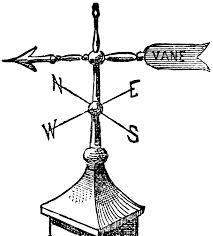


Jazz is difficult to define because it encompasses a wide range of music spanning a period of over 100 years, from ragtime to the rock-infused fusion. Īlbert Gleizes, 1915, Composition for "Jazz" from the Solomon R. That was dirty, and if you knew what it was, you wouldn't say it in front of ladies." The American Dialect Society named it the Word of the 20th Century. In an interview with National Public Radio, musician Eubie Blake offered his recollections of the slang connotations of the term, saying: "When Broadway picked it up, they called it 'J-A-Z-Z'. Its first documented use in a musical context in New Orleans was in a November 14, 1916, Times-Picayune article about "jas bands". The use of the word in a musical context was documented as early as 1915 in the Chicago Daily Tribune. The earliest written record of the word is in a 1912 article in the Los Angeles Times in which a minor league baseball pitcher described a pitch which he called a "jazz ball" "because it wobbles and you simply can't do anything with it". It is believed to be related to jasm, a slang term dating back to 1860 meaning "pep, energy". The origin of the word jazz has resulted in considerable research, and its history is well documented. Handy: early published bluesĪmerican jazz composer, lyricist, and pianist Eubie Blake made an early contribution to the genre's etymology
Weather instruments quiz free#
Modal jazz developed in the late 1950s, using the mode, or musical scale, as the basis of musical structure and improvisation, as did free jazz, which explored playing without regular meter, beat and formal structures. The mid-1950s saw the emergence of hard bop, which introduced influences from rhythm and blues, gospel, and blues to small groups and particularly to saxophone and piano. Cool jazz developed near the end of the 1940s, introducing calmer, smoother sounds and long, linear melodic lines. Bebop emerged in the 1940s, shifting jazz from danceable popular music toward a more challenging "musician's music" which was played at faster tempos and used more chord-based improvisation. In the 1930s, arranged dance-oriented swing big bands, Kansas City jazz (a hard-swinging, bluesy, improvisational style), and gypsy jazz (a style that emphasized musette waltzes) were the prominent styles. But jazz did not begin as a single musical tradition in New Orleans or elsewhere. New Orleans jazz began in the early 1910s, combining earlier brass band marches, French quadrilles, biguine, ragtime and blues with collective polyphonic improvisation. Īs jazz spread around the world, it drew on national, regional, and local musical cultures, which gave rise to different styles.

Jazz has roots in European harmony and African rhythmic rituals. Jazz is characterized by swing and blue notes, complex chords, call and response vocals, polyrhythms and improvisation. Since the 1920s Jazz Age, it has been recognized as a major form of musical expression in traditional and popular music. Jazz is a music genre that originated in the African-American communities of New Orleans, Louisiana in the late 19th and early 20th centuries, with its roots in blues and ragtime.


 0 kommentar(er)
0 kommentar(er)
